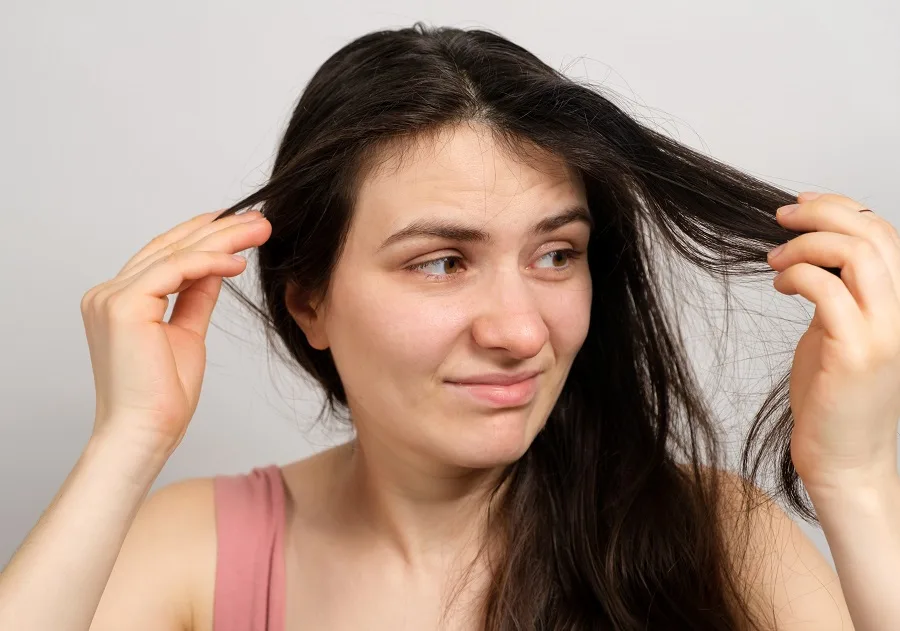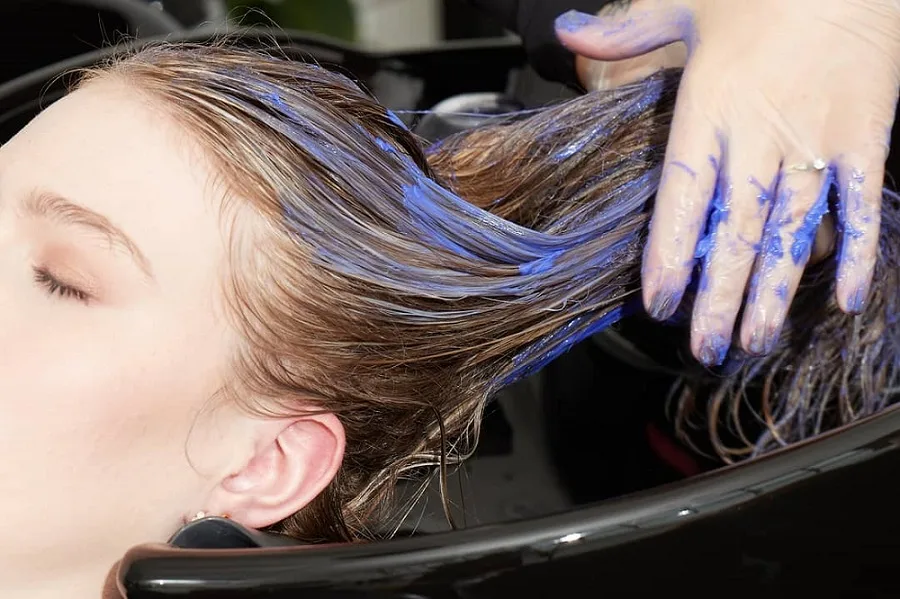A toner is used on dyed hair to alter the shade, brighten it, or maintain your hair color. It can remove brassy tones from previously bleached hair.
You can get a stunning result by toning your hair. Apart from choosing the right toner for your hair, you have to apply it correctly on your hair, and for that, you have to know if it is better to apply toner on dirty hair or clean hair.
We have answered it below and also described the reasons and effective ways to apply toner in this article.
Should You Tone Dirty or Clean Hair?

You should use toner on clean and damp (not wet or dry) hair because oils and buildup on dirty hair can interfere with the toner’s ability to penetrate and deposit color evenly.
If you have a build-up of sweat or grease after sports or outdoor activities, or you recently went swimming, the accumulation of grease or chlorine can harm the toning process.
If your hair is very oily before the toning treatment, we recommend using warm water and shampooing your hair before the toning process.
However, if your hair is oily only at the roots, you can apply toner without any issues.
What Will Happen If You Use Toner on Oily or Dirty Hair?
Oils and product buildup can create a barrier on the hair. This barrier may prevent the toner from coating the hair evenly, resulting in patchy or streaky color.
If there are styling products or other residues in the hair, they could react with the toning chemicals, potentially leading to unexpected color changes or other chemical reactions.
So, the toner might not work as well for dirty hair compared to clean hair. This can lead to less effective toning which means you might not achieve the desired shade.
What Is the Best Way to Apply Toner?

The best way to apply hair toner effectively, while ensuring the desired outcome and maintaining hair health, involves several key steps:
- As mentioned, clean hair allows for even application and optimal absorption of the toner. Wash your hair and gently towel dry it to remove excess moisture.
- To protect your hands from staining and for precise application, wear gloves. Take a hair dye brush for an even and controlled application.
- If your toner isn’t pre-mixed with a developer, choose an appropriate developer and follow the instructions to mix it correctly. Generally, you should mix the toner and developer in a 1:2 ratio.
- Using the dye brush, apply the toner to your damp hair. Keep an eye on your hair as the toner works. If your hair is too brassy leave the toner for 40 minutes, else 15 to 20 minutes will do. This will help you achieve the desired shade without over-toning.
- Once the processing time is up, rinse your hair thoroughly with normal water until the water runs clear. Avoid using hot water as it can strip away the toner.
- After rinsing, you can use a moisturizing shampoo followed by a conditioner. This helps to seal in the color and maintain the health of your hair.
Following these tips will provide you with the best toning result.
So, you should use toner on clean hair. We recommend shampooing your hair a day before toning your hair. This will allow you to understand the condition of your current hair color better for toning.
FAQS
There are some commonly asked questions and answers from those considering applying toner as a hair treatment.
You can put toner on greasy hair, as long as it is not too dirty or oily. The high alcoholic content in the toner can help get rid of the oil in your hair after application.
Most hair stylists and colorists recommend having mostly clean hair before getting your color done on your hair.
Although there have been rumors in the past that a build-up of some grease and oil is best for the color, this is untrue — oil, grease, sweat, and chemicals from hair products can reduce the color deficiency in hair.
Natural oils can help protect your scalp without becoming a detriment to the hair coloring method. The best time frame to wash your hair before getting toner or color is 1-2 days prior.
This allows a natural build-up of oil on your hair without the accumulation of dirt, grease, or sweat, which can hamper the efficiency of color, bleach, or toner.
Hairdressers usually prefer for clients to come to the salon with slightly-dirty hair. Hairdressers will choose whether to clean your hair before the specific treatment, so coming to the salon with natural hair (no products, mostly clean, not sweaty, etc.) is best.
